
2-hour wildfire evacuation notice issued for some Fort McMurray neighbourhoods
A wildfire evacuation alert for some Fort McMurray residents has been updated to a two-hour evacuation notice.
UNESCO has approved the designation of eight new global geoparks, bringing the number of sites in the Global Geoparks Network to 177, spread across 46 countries, the Paris-based UN organization announced on Wednesday.
According to UNESCO, a geopark is an area with outstanding geological heritage and a strategy to promote that heritage for the benefit of the local community.
Local communities drive and create geoparks to celebrate the Earth's heritage and achieve sustainable development of their region through 'geotourism,' UNESCO says.
“It is much more than a label. It is a recognition of geological sites of international value,” Kristof Vandenberghe, the chief of UNESCO's Earth Sciences and Geoparks Section, said at a press event.
"You cannot express everything in a monetary value. Sometimes people are discovering again and recognizing again how connected they actually are to their landscape."
Two countries, Luxembourg and Sweden, have joined the Global Network for the first time with the designation of their first geoparks.
There are five existing geoparks in Canada: Stonehammer in New Brunswick, Tumbler Ridge in B.C., Perce in Quebec, Discovery in Newfoundland, and Cliffs of Fundy in Nova Scotia. No new Canadian sites were added to the list this year.
The eight new UNESCO Global Geoparks are:
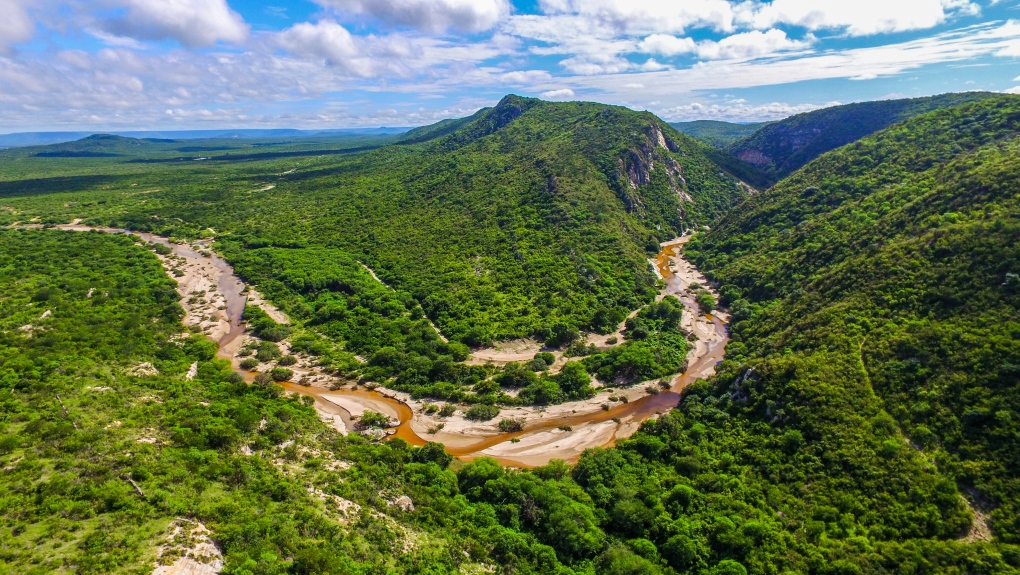 Seridó bears testimony to the last 600 million years of the Earth's history and shelters one of South America's largest scheelite mineralizations, UNESCO says. (Credit: Getson Luís/Seridó UNESCO Global Geopark)
Seridó bears testimony to the last 600 million years of the Earth's history and shelters one of South America's largest scheelite mineralizations, UNESCO says. (Credit: Getson Luís/Seridó UNESCO Global Geopark)
Seridó UNESCO Global Geopark, Brazil
According to UNESCO, the Seridó UNESCO Global Geopark is home to more than 120,000 inhabitants, including communities like the Quilombolas "who keep alive the memory of their enslaved ancestors from Africa."
The geopark bears testimony to the last 600 million years of the Earth's history and shelters one of South America's largest scheelite mineralizations, UNESCO says.
 Southern Canyons Pathways has some of South America's most noteworthy canyons.(Credit: GABRIEL ZAPAROLLI: ©Gabriel Zaparolli via UNESCO)
Southern Canyons Pathways has some of South America's most noteworthy canyons.(Credit: GABRIEL ZAPAROLLI: ©Gabriel Zaparolli via UNESCO)
Southern Canyons Pathways UNESCO Global Geopark, Brazil
Caminhos dos Cânions do Sul in southern Brazil is characterized by the Atlantic Forests, which are one of the most biodiverse ecosystems on the globe, UNESCO says.
The location also has some of South America's most noteworthy canyons.
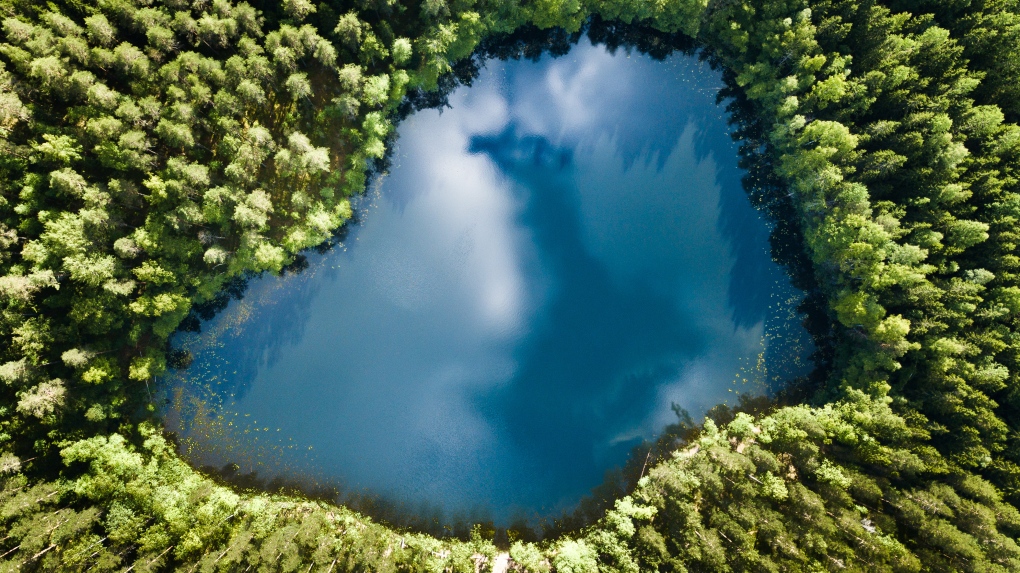 Water covers around 21 per cent of this geopark, while trees occupy more than half of it. (Credit: Johannes Sipponen/Salpausselkä Geopark)
Water covers around 21 per cent of this geopark, while trees occupy more than half of it. (Credit: Johannes Sipponen/Salpausselkä Geopark)
Salpausselkä UNESCO Global Geopark, Finland
The Salpausselkä UNESCO Global Geopark is located in southern Finland. According to UNESCO, water covers around 21 per cent of the geopark, while trees occupy more than half of it.
The geopark's hundreds of lakes, as well as the long, unique Salpauros ridges, are prominent features of the terrain.
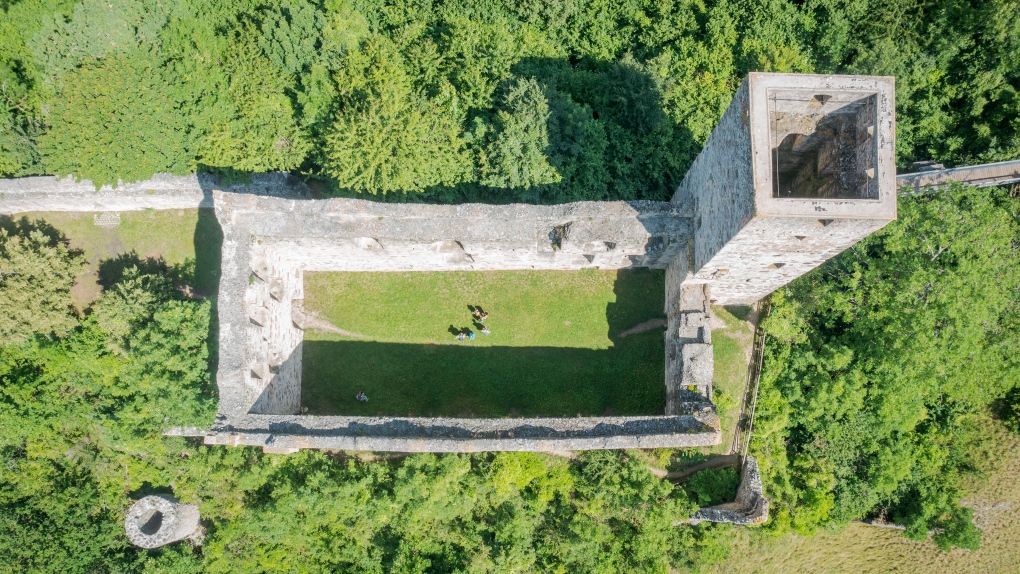 A meteorite crashed into Earth at this location around 15 million years ago, UNESCO says. (Credit: Dietmar Denger / Geopark Ries e. V. via UNESCO)
A meteorite crashed into Earth at this location around 15 million years ago, UNESCO says. (Credit: Dietmar Denger / Geopark Ries e. V. via UNESCO)
Ries UNESCO Global Geopark, Germany
The Ries UNESCO Global Geopark is mostly in Bavaria, with a tiny portion in Baden-Würtemberg. A meteorite crashed into Earth at this location around 15 million years ago, UNESCO says.
According to NASA Earth Observatory, the Nördlinger Ries impact crater is the best-preserved meteorite crater in Europe.
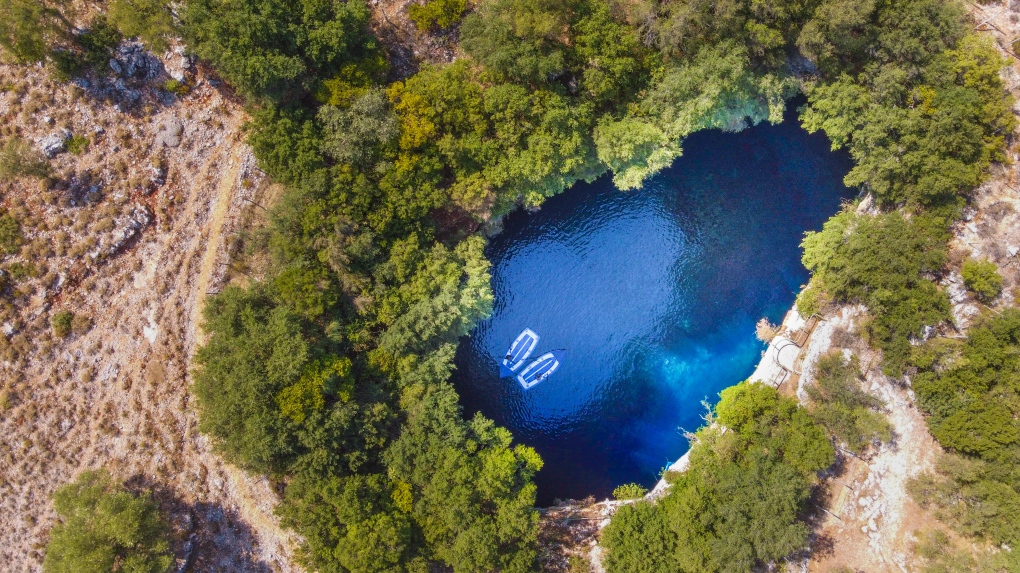 This geopark is rich in sites like caves, sinkholes, and subterranean streams, which highlight a geological history dating back over 250 million years. (Credit: Kefalonia-Ithaca via UNESCO)
This geopark is rich in sites like caves, sinkholes, and subterranean streams, which highlight a geological history dating back over 250 million years. (Credit: Kefalonia-Ithaca via UNESCO)
Kefalonia-Ithaca UNESCO Global Geopark, Greece
Kefalonia – Ithaca is a Heptanese island group in Western Greece.
The geopark is rich in sites like caves, sinkholes, and subterranean streams, which highlight a geological history dating back over 250 million years.
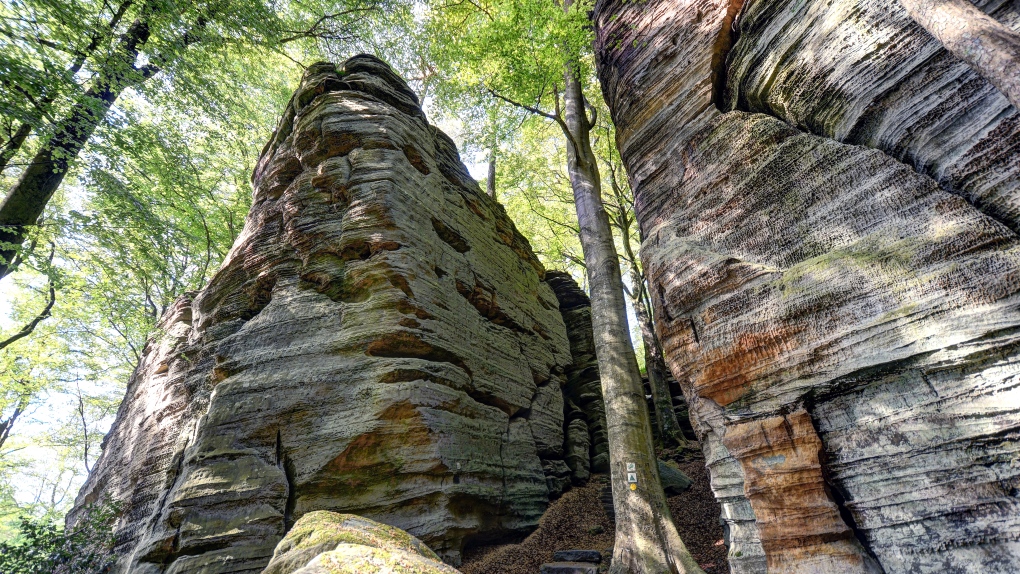 Luxembourg's Mllerdall UNESCO Global Geopark has been a tourist destination since the late 1800s. (Credit: NGPM, Uli Fielitz via UNESCO)
Luxembourg's Mllerdall UNESCO Global Geopark has been a tourist destination since the late 1800s. (Credit: NGPM, Uli Fielitz via UNESCO)
Mëllerdall UNESCO Global Geopark, Luxembourg
Luxembourg's Mllerdall UNESCO Global Geopark is one of Western Europe's "most spectacular sandstone landscapes" and has been a tourist destination since the late 1800s, UNESCO says.
It contains the Luxembourg Sandstone Formation, which may be up to 100 metres thick and comes from the Lower Liassic period (205 to 180 million years ago).
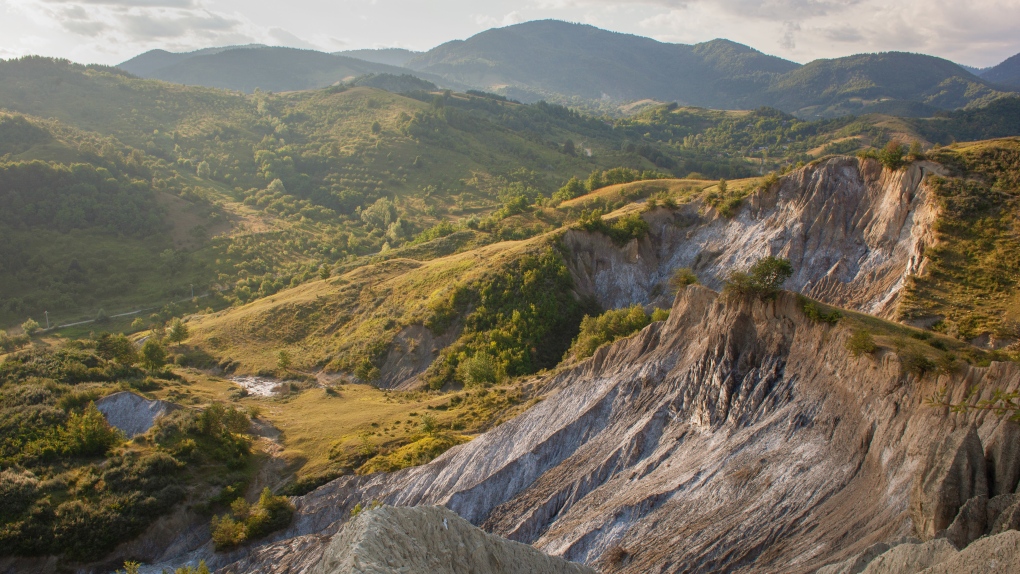 The Buzău Land UNESCO Global Geopark is home to 45,000 people in Romania's Carpathian Bend Area. (Credit: Buzău Land NGO / Răzvan-Gabriel Popa via UNESCO)
The Buzău Land UNESCO Global Geopark is home to 45,000 people in Romania's Carpathian Bend Area. (Credit: Buzău Land NGO / Răzvan-Gabriel Popa via UNESCO)
Buzău Land UNESCO Global Geopark, Romania
The Buzău Land UNESCO Global Geopark is home to 45,000 people in Romania's Carpathian Bend Area.
According to UNESCO, the geopark has 40 million years of geological history and is one of Europe's most geodynamically active places.
 The Platbergens in West Sweden is known for its scenery of 15 flat-topped table mountains, which were sculpted by erosion 115,000 years ago during the last ice age. (Credit: Henrik Theodorsson via UNESCO)
The Platbergens in West Sweden is known for its scenery of 15 flat-topped table mountains, which were sculpted by erosion 115,000 years ago during the last ice age. (Credit: Henrik Theodorsson via UNESCO)
Platåbergens UNESCO Global Geopark, Sweden
The Platbergens in West Sweden is known for its scenery of 15 flat-topped table mountains, which were sculpted by erosion 115,000 years ago during the last ice age, UNESCO says.
The Västgöta Plain, with shallow lakes, hills and well-preserved cultural landscapes, is also included in the region. According to UNESCO, it is also home to the first known stone church in Sweden, built by Christian Vikings in the early 11th century.
UNESCO noted in a release, that owing to COVID-19, they couldn’t evaluate new applications from Asia, Africa or the Arab region, but several projects for geoparks are underway in these parts of the world.
While the UNESCO World Heritage Site designation is more familiar and includes landmarks with legal protection by international conventions, the Global Geopark title is relatively newer and was established in 2015.

A wildfire evacuation alert for some Fort McMurray residents has been updated to a two-hour evacuation notice.
Saskatchewan RCMP are set to provide an update on what the service calls a 'significant' sexual assault and internet child exploitation investigation.
Canadian LifeLabs customers who filed an application for a class-action settlement began receiving their payments this week, though at a much lower amount than initially expected.
Nobel laureate Alice Munro, the Canadian literary giant who became one of the world's most esteemed contemporary authors and one of history's most honoured short story writers, has died at age 92.
Wildfires have led Environment Canada to issue air quality advisories for parts of B.C., Alberta, Manitoba, Saskatchewan and the Northwest Territories, as forecasters warn the smoke could drift farther east.
An American accused of sexually assaulting a Pennsylvania college student in 2013 and later sending her a Facebook message that said, 'So I raped you,' has been detained in France after a three-year search.
The annual list of Canada's top restaurants in the country was just released and here are the places that made the 2024 cut.
Ontario Provincial Police are responding to a fatal collision involving two vehicles on Highway 417 in Ottawa's west end on Tuesday morning.
The Israeli flag is flying at Ottawa City Hall today to mark the country's national day, with plans to hold a private ceremony to mark Israel's Independence Day. There is a significant police presence at City Hall, including security barriers outside the main doors.

A team is ready to help an entangled North Atlantic right whale in the Gulf of St. Lawrence.
A $200 reward is being offered by a North Vancouver family for the safe return of their beloved chicken, Snowflake.
Two daughters and a mother were reunited online 40 years later thanks to a DNA kit and a Zoom connection despite living on three separate continents and speaking different languages.
Mother's Day can be a difficult occasion for those who have lost or are estranged from their mom.
YES Theatre Young Company opened its acclaimed kids’ show, One Small Step, at Sudbury Theatre Centre on Saturday.
An Ottawa pizzeria is being recognized as one of the top 20 deep-dish pizzas in the world.
A family of fifth generation farmers from Ituna, Sask. are trying to find answers after discovering several strange objects lying on their land.
A Listowel, Ont. man, drafted by the Hamilton Tigercats last week, is also getting looks from the NFL, despite only playing 27 games of football in his life.
The threat of zebra mussels has prompted the federal government to temporarily ban watercraft from a Manitoba lake popular with tourists.